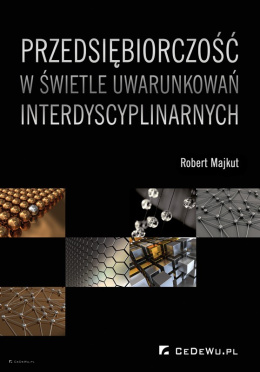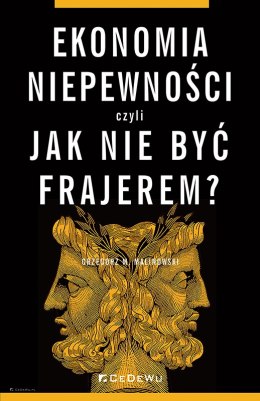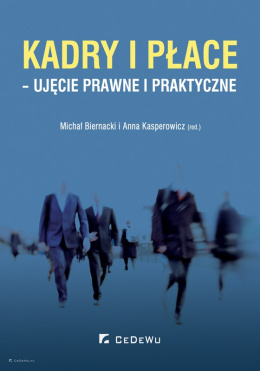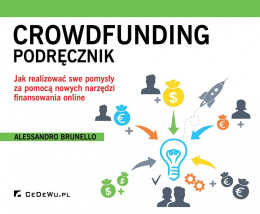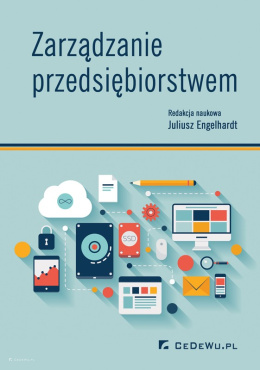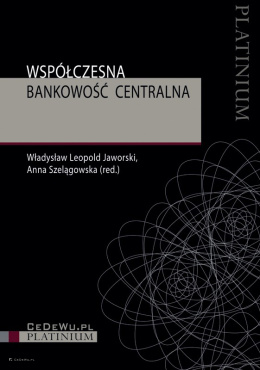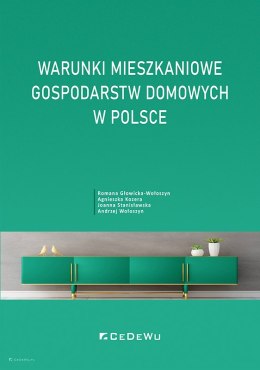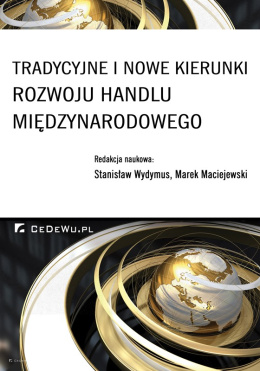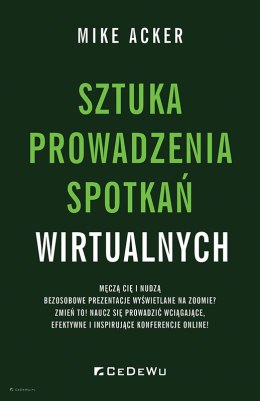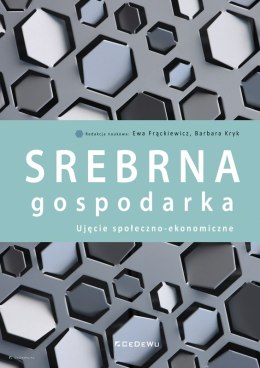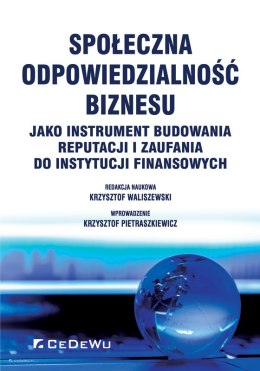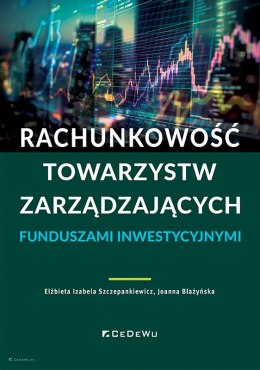-
Shopping cart is empty
-
x

-
Shopping cart is empty
-
x
- Categories
-
Międzynarodowy system walutowy. Od złota do waluty cyfrowej
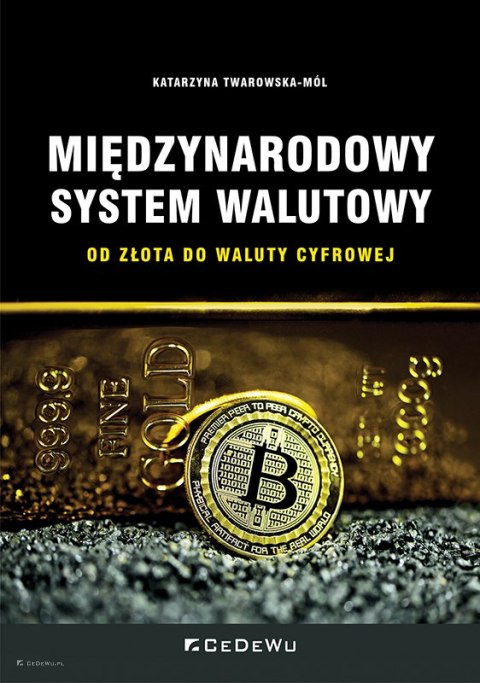
Funkcje pieniądza, początkowo pełnione przez kruszce, w szczególności złoto, następnie pieniądz papierowy, dziś przejmowane są przez pieniądz bezgotówkowy, stopniowo wypierający gotówkę. Do pełnienia funkcji pieniądza pretendują również kryptowaluty, a w szczególności tzw. stablecoins, czyli stabilne kryptowaluty, których wartość powiązana jest z kursami najważniejszych walut fiducjarnych (dolara amerykańskiego, euro, jena czy koszyka tych walut). Odpowiedzią banków centralnych na zmieniające się preferencje użytkowników pieniądza oraz rozwój nowoczesnych technologii i wzrost popularności funkcjonujących z ich wykorzystaniem walut wirtualnych jest podjęcie prac nad emisją pieniądza cyfrowego banku centralnego (CBDC - Central Bank Digital Currency). Niniejsza monografia wpisuje się w ważny nurt dyskusji ekonomicznej i dotyczy aktualnego problemu, jakim są przemiany w międzynarodowym systemie walutowym. W książce przedstawiono: • najważniejsze koncepcje pieniądza międzynarodowego, • ewolucję międzynarodowego systemu walutowego ze szczególnym uwzględnieniem zmieniających się form pieniądza, • dyskusję nad kolejną transformacją międzynarodowego systemu walutowego oraz rozważania, czy waluty cyfrowe zastąpią obecny system pieniężny i walutowy. Kompleksowość przeprowadzonych rozważań, aktualność problematyki oraz przejrzysty układ sprawiają, że książka może być doskonałą lekturą zarówno dla pracowników naukowych, studentów ekonomii i finansów, jak i ekspertów oraz analityków rynku finansowego, a także wszystkich chcących zrozumieć istotę procesów zachodzących w międzynarodowym systemie walutowym oraz poszukujących odpowiedzi m.in. na następujące pytania: • Jakie zasady międzynarodowego systemu walutowego zapewnią jego stabilność w warunkach dynamicznej globalizacji procesów gospodarczych? • W jakim kierunku zmierza transformacja międzynarodowego systemu walutowego? • Czy waluty cyfrowe zastąpią obecny system pieniężny i walutowy?
| Shipping within | 24 hours |
| The bar code | |
| ISBN | 978-83-8102-543-0 |
| EAN | 9788381025430 |
Niniejsza monografia wpisuje się w ważny nurt dyskusji ekonomicznej i dotyczy aktualnego problemu, jakim są przemiany w międzynarodowym systemie walutowym. W książce przedstawiono:
• najważniejsze koncepcje pieniądza międzynarodowego,
• ewolucję międzynarodowego systemu walutowego ze szczególnym uwzględnieniem zmieniających się form pieniądza,
• dyskusję nad kolejną transformacją międzynarodowego systemu walutowego oraz rozważania, czy waluty cyfrowe zastąpią obecny system pieniężny i walutowy.
Kompleksowość przeprowadzonych rozważań, aktualność problematyki oraz przejrzysty układ sprawiają, że książka może być doskonałą lekturą zarówno dla pracowników naukowych, studentów ekonomii i finansów, jak i ekspertów oraz analityków rynku finansowego, a także wszystkich chcących zrozumieć istotę procesów zachodzących w międzynarodowym systemie walutowym oraz poszukujących odpowiedzi m.in. na następujące pytania:
• Jakie zasady międzynarodowego systemu walutowego zapewnią jego stabilność w warunkach dynamicznej globalizacji procesów gospodarczych?
• W jakim kierunku zmierza transformacja międzynarodowego systemu walutowego?
• Czy waluty cyfrowe zastąpią obecny system pieniężny i walutowy?
Wstęp 9
Rozdział 1
Najważniejsze koncepcje pieniądza międzynarodowego 13
1.1. Wprowadzenie 13
1.2. Złoto w funkcji pieniądza międzynarodowego 14
1.3. Waluta kluczowa 18
1.4. Międzynarodowa jednostka walutowa 22
1.5. Niezależne waluty narodowe jako podstawa systemu 24
1.6. Waluta towarowa 25
1.7. Pieniądz cyfrowy banku centralnego 28
1.8. Kryptowaluty 32
1.9. Porównanie najważniejszych koncepcji pieniądza międzynarodowego 34
Rozdział 2
Międzynarodowy system walutowy w erze pieniądza kruszcowego 39
2.1. System waluty złotej 39
2.2. Międzynarodowy system walutowy w okresie międzywojennym 55
2.3. System walutowy z Bretton Woods 75
Rozdział 3
System oparty na pieniądzu fiducjarnym w latach 70. i 80. XX w. 97
3.1. Skutki upadku systemu z Bretton Woods, kryzysów energetycznych i gospodarczych 97
3.1.1. Destabilizacja walutowa 97
3.1.2. Skutki przejścia do płynnych kursów walutowych 99
3.1.3. Przyczyny, skala i skutki inflacji 107
3.1.4. Spadek stopy wzrostu PKB 111
3.1.5. Narastanie nierównowag na rachunkach obrotów bieżących a procesy dostosowawcze 113
3.2. Wprowadzenie pieniądza międzynarodowego - Special Drawing Rights jako inicjatywa na rzecz stabilizacji MSW 122
3.3. Trudności w koordynacji polityki walutowej krajów posiadających waluty kluczowe 129
3.4. Liberalizacja przepływów kapitału i rozwój rynku walutowego jako przyczyny kryzysów walutowych 142
3.5. Ocena pozycji walut kluczowych międzynarodowego systemu walutowego 154
3.6. Ocena funkcjonowania MSW w latach 70. i 80. XX w. 167
Rozdział 4
Współczesny międzynarodowy system walutowy w warunkach globalizacji od lat 90. XX w. 173
4.1. Postępująca policentryzacja układu sił gospodarczych w warunkach globalizacji a funkcjonowanie MSW 173
4.2. Czynniki wzrostu ryzyka kursowego 187
4.3. Międzynarodowy rynek finansowy a stabilność MSW 195
4.4. Problem utrzymywania się nierównowag na rachunkach obrotów bieżących 214
4.5. Ocena walut kluczowych w funkcjach pieniądza międzynarodowego 220
Rozdział 5
Dyskusja nad kolejną transformacją międzynarodowego systemu walutowego 243
5.1. Przesłanki zreformowania międzynarodowego systemu walutowego 243
5.2. Koncepcje transformacji międzynarodowego systemu walutowego 248
5.3. Czy waluty cyfrowe zastąpią obecny system pieniężny i walutowy? 255
5.3.1. Przesłanki cyfryzacji pieniądza 255
5.3.2. Kryptowaluty jako waluty międzynarodowe 259
5.3.3. Pieniądz cyfrowy banku centralnego w funkcji waluty międzynarodowej 267
Zakończenie 281
Bibliografia 287
Spis rysunków 311
Spis tabel 315
Recenzja: Dr hab. Bartosz Jóźwik, prof. Katolickiego Uniwersytetu Lubelskiego Jana Pawła II
Pozycje książkowe
Aczel A.D., Statystyka w zarządzaniu, PWN, Warszawa 2000.
Address to the Nation Outlining a New Economic Policy: ‘the Challenge of Peace’ 1971, 15 August, [w:] M. Duckenfield (ed.), The Monetary History of Gold: a Documentary History, 1660-1999, vol. 3, Pickering & Chatto, London 2004.
Aliber R.Z., Kindleberger Ch.P., Manias, Panics, and Crashes: A History of Financial Crises, 7th edition, Palgrave, London, 2015.
Angell J.W., Gold, Banks, and the New Deal, „Political Science Quarterly”, vol. 49, no. 4, December 1934.
Angeloni I., Bénassy Quéré A., Carton B., Darvas Z., Destais Ch., Pisani-Ferry J., Sapir A., Vallee S., Global currencies for tomorrow: a European perspective, Bruegel Blueprint Series, Volume XIII, 2011.
Asso P.F., Fiorito L., A Scholar in Action in Interwar America: John H. Williams on Trade Theory and Bretton Woods, [w:] R. Leeson (ed.), American Power and Policy, Palgrave Macmillan, 2009.
Bansal R., Singh S., China’s Digital Yuan: An Alternative to the Dollar-Dominated Financial System, Carnegie Endowment for International Peace, 2021.
Begg D., Fisher S., Dornbush R., Makroekonomia, PWE, Warszawa 2003.
Bernstein P.L., Historia złota. Dzieje obsesji, WIG-Press, Warszawa 2003.
Bilski J., Janicka M., Wdowiński P., Maciejczyk-Bujnowicz I., Import kapitału a sfera realna polskiej gospodarki, PWE, Warszawa 2018.
Bilski J., Międzynarodowy system walutowy. Kierunki ewolucji, PWE, Warszawa 2006.
Bilson J.F., Expectations and the Gold Standard, [w:] M.B. Connolly (ed.), The International Monetary System: Choices for the Future, Praeger Special Studies, 1982.
Bogołębska J., Nierównowagi globalne a stabilność międzynarodowego system walutowego. Analiza na przykładzie akumulacji rezerw walutowych, Wydawnictwo Uniwersytetu Łódzkiego, Łódź 2013.
Borcuch A., Ewolucyjne uwarunkowania pieniądza cyfrowego, CeDeWu, Warszawa 2012.
Bordo M.D., Eichengreen B., Bretton Woods and the Great Inflation, [w:] M.D. Bordo, A. Orphanide (eds), The Great Inflation: The Rebirth of Modern Central Banking, NBER 2013.
Bordo M.D., The Bretton Woods International Monetary System, [in:] M.D. Bordo, B. Eichengreen (eds), A Retrospective on the Bretton Woods System. Lessons for International Monetary Reform, National Bureau of Economic Research, The University of Chicago Press, Chicago and London 1993.
Borowiec J., Unia ekonomiczna i monetarna – historia, podstawy teoretyczne, polityka, Akademia Ekonomiczna, Wrocław 2001.
Boughton J.M., Silent Revolution. The International Monetary Fund 1979-1989, IMF, Washington 2001.
Boykorayev B., Factors that determine nominal exchange rates and empirical evidence of cross-sectional analysis, Aarhus School of Business, 2008.
Brender A., Pisani F., Global Imbalances and the Collapse of Globalised Finance, Centre for European Policy Studies, Brussels 2010.
Buckley A., Multinational Finance, Pearson Education Limited, 2000.
Calleo D., Beyond American Hegemony, Basic Book, New York 1987.
Caves R.E., Frankel J.A., Jones R.W., Handel i finanse międzynarodowe, PWE, Warszawa 1998.
Cesarano F., Monetary Theory and Bretton Woods. The Construction of an International Monetary Order, Cambridge University Press, 2006.
Chandler L., The Economics of Money and Banking, New York 1953.
Chinn M., Frankel J.A., Will the Euro Eventually Surpass the Dollar as Leading International Reserve Currency, [w:] R.H. Clarida (red.) G7 Current Account Imbalances: Sustainability and Adjustment, University of Chicago Press, 2007.
Chisholm A.M., Wprowadzenie do międzynarodowych rynków finansowych. Instrumenty, strategie, uczestnicy, Oficyna a Wolters Kluwer business, Warszawa 2013.
Chmielniak J., Friedrich August von Hayek i proroctwo kryptowaluty (Wprowadzenie tłumacza), [w:] F.A. von Hayek, Denacjonalizacja pieniądza, Fundacja Lethe, 2019.
Chrabonszczewska E., Kalicki K., Teoria i polityka kursu walutowego, Oficyna Wydawnicza Szkoły Głównej Handlowej, Warszawa 1996.
Clough S.B., The Rise and Fall of Civilization. An Inquiry into the Relationship between Economic Development and Civilization, New York and London 1970.
Cohen B. J., A Brief History of International Monetary Relations, [w:] J.A. Frieden, D.A. Lake, (eds), International Political Economy. Perspective on Global Power and Welath, 3rd edition, London and New York 1995.
Cohen B.J., Organizing the World’s Money, London 1977.
Cohen B.J., The Future of Sterling as an International Currency, Macmillan, London 1971.
Cohen B.J., The Geography of Money, Cornell University Press, Ithaca and London, 1998.
Cohen L., Making a New Deal: Industrial Workers in Chicago, 1919-1939, Cambridge University, New York, 1991.
Confidential Telegram from the Deputy Governor of the Bank of England, Concerning the Decision the Decision of the United Kingdom to Go off the Gold Standard, 1931, September 20, [w:] M. Duckenfield (ed.), The Monetary History of Gold: a Documentary History, 1660-1999, vol. 3, Pickering & Chatto, London 2004.
Cooper R., The Gold Standard: Historical Facts and Future Prospects, [w:] B. Eichengreen (ed.), The Gold Standard in Theory and History, Methuen, New York 1985.
Croome H.M., Hammond R.J., An Economic History of Britain, London 1948.
Denizet J., Wielka inflacja, PWN, Warszawa 1981.
Destler I.M., American Trade Politics, 4th edition, Peterson Institute for International Economics, June 2005.
Drabowski E., Pieniądz międzynarodowy, PWE, Warszawa 1988.
Drummond I.M., The Gold Standard and the International Monetary System 1900-1939, The Economic History Society, MacMillan Education, 1987.
Duckenfield M. (ed.), The Monetary History of Gold. A Documentary History, 1660-1999, vol. 3, Pickering & Chatto, London 2004.
Duncan R., The Dollar Crisis, John Wiley & Sons (Asia) Pte Ltd, Singapore 2003.
Eichengreen B. (ed.), The Gold Standard in Theory and History, Methuen, New York 1985.
Eichengreen B., Exorbitant privilege. The Rise and Fall of the Dollar, Oxford University Press, 2011.
Eichengreen B., Flandreau B. (eds), The Gold Standard in Theory and History, 2nd ed., Routledge, London – New York 2008.
Eichengreen B., Global Imbalances and the Lessons of Bretton Woods, MIT Press, Cambridge MA-London 2007.
Eichengreen B., Golden Fetters: The Gold Standard and the Great Depression, 1919-1939, Oxford University Press, 1996.
Eichengreen B., International Policy Coordination: The Long View, [w:] R.C. Feenstra, A.M. Taylor (red.), Globalization in an Age of Crisis: Multilateral Economic Cooperation in the Twenty-First Century, University of Chicago Press, December 2013.
Eichengreen B., Park Y.Ch., Global Imbalances and Emerging Markets, [w:] J.J. Teunissen, A. Akkerman (eds), Global Imbalances and the US Debt Problem: Should Developing Countries Support the US Dollar?, FONDAD, The Hague, 2006.
Eichengreen B., The European Economy Since 1945. Coordinated Capitalism and Beyond, Princeton University Press, Princeton-Oxford, 2007.
Einzing P., The Destiny of Gold, London 1973.
Endres A.M., Great Architects of International Finance. The Bretton Woods Era, Routledge, London and New York, 2005.
Executive Order (no. 6102) of United States President Franklin D. Roosevelt Prohibiting the Hoarding of Gold Coin, Gold Bullion, and Gold Certificates, and requiring Them to Be Delivered to the Federal Reserve Bank, 1933, April 5, [w:] M. Duckenfield (ed.), The Monetary History of Gold: a Documentary History, 1660-1999, vol. 3, Pickering & Chatto, London 2004.
Fase M., Reflection on world economic imbalance, [w:] D.E. Fair, C. de Boissieu (eds), The International Adjustment Process: New Perspectives, Recent Experience, Kluwer Academic Publishers, Dordrecht, Boston, London 1989.
Forbes S., Ames E., Pieniądz. Dlaczego niszczenie dolara zagraża światowej gospodarce i jak można temu zapobiec, MT Biznes, Warszawa 2015.
Frankel J.A., Impact of the euro on members and non-members, [w:] R. Mundell, A. Clesse (red.) The euro as a stabilizer in the international economic system, Kluwer, Boston 2000.
Frieden J.A., The Dynamics of International Monetary Systems: International and Domestic Factors in the Rise, Reign, and Demise of the Classical Gold Standard, [w:] B. Eichengreen, M. Flandreau (eds), The Gold Standard in the Theory and History, Routledge, London-New York 2008.
Friedman M., Integrujący pieniądz. Z historii systemów monetarnych, Wydawnictwo Łódzkie, Łódź 1994.
Friedman M., Kapitalizm i Wolność, Wydawnictwo Helion, Gliwice 2008.
Funabashi Y., Managing the Dollar: From the Plaza to the Louvre, Institute for International Economics, Washington, D.C., 1988.
Garritsen de Vries M., Exchange Rate Adjustment, [w:] J.K. Horsefield, The International Monetary Fund 1945-1965. Twenty Years of International Monetary Cooperation, vol. II: Analysis, IMF, Washington 1969.
Garritsen de Vries M., The IMF in a Changing World 1945-1985, IMF, Washington 1986.
Garritsen de Vries M., The International Monetary Fund 1966-1971. The System Under Stress, Volume I: Narrative, IMF, Washington 1976.
Garritsen de Vries M., The International Monetary Fund 1972- 1978. Cooperation and Trial, vol. I: Narrative and analysis, IMF, Washington 1985.
Ghosh A.R., Gulde A.M., Wolf H.C., Exchange Rate Regimes, MIT 2002.
Gilpin R., Global Political Economy. Understanding the International Economic Order, Princeton University Press, Princeton and Oxford, 2001.
Głuchowski J., Międzynarodowe stosunki finansowe, PWE, Warszawa 1997.
Gold and Silver (Export Control) Act, 1920, 1920, November 4, [w:] M. Duckenfield (ed.), The Monetary History of Gold: A Documentary History, 1660-1999, vol. 2, Pickering & Chatto, London 2004.
Gold Reserve Act of 1934,1934, January 30, [w:] M. Duckenfield (ed.), The Monetary History of Gold: a Documentary History, 1660-1999, vol. 3, Pickering & Chatto, London 2004.
Gold Standard (Amendent) Act, 1931, September 21, [w:] M. Duckenfield (ed.), The Monetary History of Gold: a Documentary History, 1660-1999, vol. 3, Pickering & Chatto, London 2004.
Gomes L., Neoclassical International Economics: An Historical Survey, Palgrave Macmillan, 1990.
Gourinchas P.O., Rey H., From World Banker to World venture Capitalist. U.S. External Adjustment and the Exorbitant Privilege, [w:] R.H. Clarida (ed.), G7 Current Account Imbalances: Sustainability and Adjustment, University of Chicago Press, 2007.
Graham B., World Commodities and World Currency, London 1944.
Greenspan A., Gold and Economic Freedom, [w:] A. Rand (ed.), Capitalism: The Unknown Ideal, Signet, New York, 1967.
Gregory T.E., Gold, Unemployment, and Capitalism, London 1933.
Grossman R.S., Wrong: Nine Economic Policy Disasters and What We Can Learn from Them, Oxford University Press, New York 2013.
Gruszczyński M., Kryzysy walutowe a liberalizacja obrotów kapitałowych, Wydawnictwo Naukowe PWN, Warszawa 2002.
Gruszczyński M., Kryzysy walutowe, bankowe i zadłużeniowe w gospodarce światowej, CeDeWu, Warszawa 2013.
Gruszecki T., Kryzys międzynarodowego systemu walutowego a spory o pieniądz, Katolicki Uniwersytet Lubelski, Lublin 2011.
Haggard S., The Political Economy of the Asian Financial Crisis, Institute for International Economics, Washington 2000.
Hartmann P., Currency competition and foreign exchange market – the Dollar, the Yen, and the Euro, Cambridge University Press, 1998.
Hawtrey R.G., The Gold Standard in Theory and Practice, 5th edition, Longmans, Green and Co., London 1947.
Hayek F.A., Denacjonalizacja pieniądza, Fundacja Lethe, 2019.
Hayek F.A., Denationalization of Money: The Argument Refined. An Analysis of the Theory and Practice of Concurrent Currencies, The Institute of Economic Affairs, 1990.
Hayek F.A., Monetary Nationalism and International Stability, Longman Green, London 1937. Przedruk: Augustus M. Kelley Publishers, Fairfield NY 1989.
Hayek F.A., Pieniądz i kryzysy. Dzieła wybrane. Tom I, Instytut Ludwiga von Misesa, Warszawa 2014.
Helleiner E., Ewolucja międzynarodowego systemu walutowego i finansowego, [w:] J. Ravenhill (red.), Globalna ekonomia polityczna, Wydawnictwo Uniwersytetu Jagiellońskiego, Kraków 2011.
Helleiner E., States and the reemergence of global finance, Cornell University Press, Ithaca, New York, 1994.
Hicks J.R., Kapitał i wzrost, PWE, Warszawa 1978.
Homer S., Sylla R., A History of Interest Rates, 4th ed., John Wiley & Sons, Hoboken NJ. 2005.
Horsefield J.K., The International Monetary Fund 1945-1965. Twenty Years of International Monetary Cooperation, vol. I: Chronicle, IMF, Washington 1969.
Husted S.L., Melvin M., International Economics, Boston 2001.
Irwin D.A., Policy Reversals and Drift, 1912-1928, [w:] D.A. Irwin (ed.), Clashing over Commerce: A History of U.S. Trade Policy, University of Chicago Press, 2017.
Isard P., Globalization and the International Financial System. What’s Wrong and What can Be Done, Cambridge University Press, Cambridge 2005.
Jacobson P., Some Monetary Problems. International and National, London, 1958.
James H., International Monetary Cooperation Since Bretton Woods, IMF and Oxford University Press, Washington – New York 1996.
Janicka M., Liberalizacja przepływów kapitałowych w gospodarce światowej. Przypadek Polski, Wydawnictwo Uniwersytetu Łódzkiego, Łódź 2010.
Jarosz A., Mucha-Leszko B., Od wspólnej polityki walutowej do euro, [w:] B. Mucha-Leszko (red.), „Biuletyn Europejski 1998. Polityka społeczno-ekonomiczna Unii Europejskiej. Zakres, Sektory, Dziedziny”, Wydawnictwo UMCS, Lublin 1999.
Jurek M., Europejski System Walutowy jako przedpole systemu walutowego obszaru euro, [w:]
Z. Knakiewicz (red.), Współczesny pieniądz w teorii i praktyce, Wydawnictwo Akademii Ekonomicznej w Poznaniu, Poznań 2008.
Jurek M., Międzynarodowy system walutowy i systemy kursowe w warunkach integracji finansowej, Wydawnictwo Uniwersytetu Ekonomicznego w Poznaniu, Poznań 2011.
Kaldor N., International monetary reform: the need for a new approach, [w:] Further Essays on Applied Economics, Duckworth, London 1974.
Kaldor N., The problem of international liquidity, [w:]Further Essays on Applied Economics, Duckworth, London 1964.
Kaldor N., The role of commodity prices in economic recovery, [w:] A.P. Thirlwall, F. Targetti (eds), The Essential Kaldor, Holmes & Meier, New York 1989.
Karpiński Z., O Wielkopolsce, złocie i dalekich podróżach, PIW, Warszawa 1971.
Karwowski J., Centra offshore na globalnych rynkach finansowych, PWE, Warszawa 2010, s. 69-118.
Kąkol M., Mucha-Leszko B., Znaczenie euro jako waluty światowej, [w:] B. Mucha-Leszko (red.), Współczesna gospodarka światowa. Główne centra gospodarcze, Wydawnictwo Uniwersytetu Marii Curie-Skłodowskiej, Lublin 2005.
Kelm R., Kurs złoty/euro: teoria i empiria, Wydawnictwo Uniwersytetu Łódzkiego, Łódź 2013.
Kennedy P., Mocarstwa świata. Narodziny, rozkwit, upadek. Przemiany gospodarcze i konflikty zbrojne w latach 1500-2000, Książka i Wiedza, Warszawa 1994.
Kenwood A.G., Lougheed A.L., The Growth of the International Economy 1820-1960, George Allen&Unwin LTD, London, Sydney 1971.
Keynes J.M., Proposals for an International Clearing Union (April, 1943), [w:] J.K. Horsefield (ed.), The International Monetary Fund 1945 – 1965. Twenty Years of International Monetary Cooperation, vol. III: Documents, IMF, Washington 1969.
Keynes J.M., Proposals for an International Currency (or Clearing) Union (February 11, 1942), [w:] J.K. Horsefield (ed.), The International Monetary Fund 1945-1965. Twenty Years of International Monetary Cooperation, vol. III: Documents, IMF, Washington (1942) 1969.
Keynes J.M., Proposals for an International Currency Union (Second Draft, November 18, 1941, [w:] D. Moggridge (ed.), The Collected Writings of John Maynard Keynes, Volume XXV, Activities 1940-1944, Shaping the Post-war World: the Cleaning Union, MacMillan, London (1941) 1980.
Keynes J.M., The Collected Writings, Volume XXV: Activities 1940-44 – Shaping the Post-war World: The Clearing Union, Basingstoke, 1980.
Keynes J.M., The Economic Consequences of Mr. Churchill, London 1925.
Keynes J.M., The General Theory of Employment, Interest and Money, Macmillan Cambridge University Press, Cambridge 1936.
Killick J., The United States and European Reconstruction 1945-1960, Keele University Press, Edinburgh 1997.
Kindleberger Ch.P., World Economic Primacy: 1500 to 1900, New York 1996, s. 131, L.C.A. Knowles, Economic Development in the Nineteenth Century: France, Germany, Russia and the United States, London 1948.
Knakiewicz Z., Deflacja polska, PWE, Warszawa 1967.
Knakiewicz Z., Pieniądz w dorobku Edwarda Taylora, [w:] W. Wilczyński (red.), Edward Taylor 1884-1964. Wartości niedocenione a nieprzemijające, PWN, Warszawa-Poznań 1988.
Kosztowniak A., Zadłużenie zagraniczne jako problem globalny, [w:] J.L. Bednarczyk (red.), Współczesna polityka gospodarcza. Wybrane zagadnienia, Wydawnictwo Politechniki Radomskiej, Radom 2008.
Kowalski P., Lesher M., A commercial policy package for rebalancing the global Economy?, [w:] S. Claessens, S. Evenett, B. Hoekman (red.), Rebalancing the Global Economy: A Primer for Policymaking, CEPR, 2010.
Krugman P.R., Obstfeld M., Ekonomia międzynarodowa. Teoria i polityka 2, PWN, Warszawa 2015.
Lindert P.H., Key-Currencies and Gold 1900-1913, Princeton 1969.
Lyons R.K., The Microstructure Approach to Exchange Rates, Cambridge, Haas School of Business, MIT Press, 2001.
Machaj M., Wolny rynek pieniądza zamiast banków centralnych. Wstęp do wydania polskiego, [w:] L. Rockwell (red.), Austriacy o standardzie złota, Instytut Ludwiga von Misesa, Warszawa 2011.
Maddison A., Phases of Capitalist Development, Oxford University Press, 1982.
Małecki W., Sławiński A., Piasecki R., Żuławska U. (red.), Kryzysy walutowe, PWN, Warszawa 2001.
Marks K., Kapitał, t. I, Warszawa 1970.
Marrewijk Ch. van, International Economics. Theory, Application, and Policy, Oxford University Press 2007.
McCallum B.T., International Monetary Economics, Oxford University Press, Oxford-New York 1996.
McKinnon R.I., Money in international exchange: the convertible currency system, Oxford University Press, Oxford 1979.
Meltzer A.H., How and Why the Fed Must Change in Its Second Century, [w:] O.F. Humpage, Current Federal Reserve Policy Under the Lens of Economic History. Essays to Commemorate the Federal Reserve System’s Centennial, Cambridge University Press, 2015.
Meltzer A.H., Keynes’s Monetary Theory: A Different Interpretation, Cambridge University Press, 1988.
Moggridge D.E., British Monetary Policy 1924-1931: The Norman Conquest of $4.86, University of Cambridge, Department of Applied Economics, Monographs 21, Cambridge University Press, 1972.
Montiel P.J., Makroekonomia międzynarodowa, Oficyna a Wolter Kluwer business, Warszawa 2012.
Moosa A.I., International finance, an analytical approach, McGraw-Hill, Australia 2004.
Moździerz A., Paradygmat deficytów bliźniaczych a doświadczenia krajów Europy Środkowo-Wschodniej, PWE, Warszawa 2018.
Mucha-Leszko B., Kąkol M., Globalizacja i zmiany w układzie sił gospodarczych a międzynarodowy system walutowy, [w:] E. Molendowski (red.), Globalizacja i regionalizacja we współczesnym świecie, Księga jubileuszowa dedykowana Profesor Irenie Pietrzyk, Wydawnictwo Uniwersytetu Ekonomicznego w Krakowie, Kraków 2012.
Mucha-Leszko B., Polityka regionalna jako element interwencjonizmu państwowego w USA, Wydawnictwo UMCS, Lublin 1984.
Mucha-Leszko B., Rozwój powiązań w gospodarce światowej – etapy globalizacji i regionalizacja procesów gospodarczych, [w:] B. Mucha-Leszko (red.), Współczesna gospodarka światowa. Główne centra gospodarcze, Wydawnictwo UMCS, Lublin 2005.
Mucha-Leszko B., Strefa euro. Wprowadzanie, funkcjonowanie, międzynarodowa rola euro, Wyd. UMCS, Lublin 2007.
Mundell R., Financial crises and the International Monetary System, Columbia University New York, NY 10027 March 3, 2009.
Mundell R., The Case for a Manager International Gold System, [w:] M.B. Connolly (ed.), The International Monetary System: Choices for the Future, Praeger Special Studies, 1982.
Mussa M.L., The Theory of Exchange Rate Determination, [w:] J.F.O. Bilson, R.C. Marston (eds), Exchange Rate Theory and Practice, University of Chicago Press, 1984.
Najlepszy E., Liberalizacja międzynarodowych rynków finansowych – teoria a rzeczywistość, [w:] E. Najlepszy, M. Bartosik-Purgat (red.), Determinanty i wyzwania gospodarki światowej, Wydawnictwo Uniwersytetu Ekonomicznego w Poznaniu, Poznań 2009.
Newton S., The Global Economy 1944-2000, Arnold, London 2004.
Oatley T., International Political Economy, Pearsons Education, Inc., 2005
Obstfeld M., Rogoff K., Global Imbalances and the Financial Crisis: Products of Common Causes, [w:] Asia and the Global Financial Crisis. Asia Economic Policy Conference, Santa Barbara, CA, October 18-20, Federal Reserve Bank of San Francisco 2009.
Ocampo J.A., Resetting the International Monetary (Non)System, UNU-WIDER Studies in Development Economics, Oxford University Press, Oxford 2017.
Officer L.H., The Price of Gold, 1257-2009, MeasuringWorth 2010.
Orłowski W.M., Pieniądz światowy, [w:] Leksykon finansowo-bankowy, PWE, Warszawa 1992.
Oye K., The Sterling-Dollar-Franc Triangle: Monetary Diplomacy 1929-1937, [w:] K. Oye (ed.), Cooperation Under Anarchy, Princeton University Press, Princeton 1986.
Padoa-Shioppa T., Adapting Central Banking to a Changing Environment, [w:] T.J.T. Balino, C. Cottarelli (eds), Frameworks for Monetary Stability. Policy Issues and Country Experience, IMF Institute and Monetary and Exchange Affairs Department, IMF, Washington 1994.
Palan R., The offshore world: sovereign markets, virtual places and nomad millionaires, Cornell University Press, Ithaca, New York, 2003.
Pauly L.W. Ekonomia polityczna globalnych kryzysów finansowych, [w:] J. Ravenhill (red.), Globalna ekonomia polityczna, Wydawnictwo Uniwersytetu Jagiellońskiego, Kraków 2011.
Pietrzak E., Międzynarodowe operacje walutowe. Rodzaje, mechanizmy, techniki, Biblioteka Menedżera i Bankowca, Warszawa 1992.
Piotrowska A.I., Bitcoin. Płatnicze i inwestycyjne zastosowanie kryptowaluty, CeDeWu, 2018.
Polak J.J., Should the SDR Become the Sole Financing Technique for the IMF?,[w:] M. Mussa, J.M. Boughton, P. Isard (red.), The Future of the SDR in Light of Changes in the International Monetary System, International Monetary Fund, 1996.
Presidential Proclamation (no. 2039) of Franklin D. Roosevelt Prohibiting Gold and Silver Exports and Foreign Exchange Transactions, 1933, March 6, [w:] M. Duckenfield (ed.), The Monetary History of Gold: a Documentary History, 1660 - 1999, vol. 3, Pickering & Chatto, London 2004.
Presidential Proclamation (no. 2072) of Franklin D. Roosevelt Fixing the Gold value, by Weight, of the United States Dollar, Making the Dollar Convertible to Gold at the New Price of $35.00 Per Ounce, 1934, January 31, [w:] M. Duckenfield (ed.), The Monetary History of Gold: a Documentary History, 1660 - 1999, vol. 3, Pickering & Chatto, London 2004.
Pszczółka I., Euro a integracja europejskich rynków finansowych, CeDeWu, Warszawa 2007.
Pszczółka I., Współczesne waluty międzynarodowe, CeDeWu, Warszawa 2011.
Radelet S., Sachs J., The onset of the East Asian financial crisis, Harvard University 1998.
Ravenhill J. (red.), Globalna ekonomia polityczna, Wydawnictwo Uniwersytetu Jagiellońskiego, Kraków 2011.
Rączkowski S., Międzynarodowe stosunki finansowe, PWE, Warszawa 1984.
Report entitled ‘The suspension of the Gold Standard in Great Britain and its effect on the countries of Europe, 1932[w:] M. Duckenfield (ed.), The Monetary History of Gold: a Documentary History, 1660-1999, vol. 3, Pickering & Chatto, London 2004.
Resolution of the Board of Directors of the Bank of International Settlements Relating to the Gold Standard, 1933, July 11, [w:] M. Duckenfield (ed.), The Monetary History of Gold: a Documentary History, 1660-1999, vol. 3, Pickering & Chatto, London 2004.
Rickards J., The death of money. The coming collapse of the international monetary system, Portfolio Penguin, 2014.
Rithbard M.N., Alan Greenspan: A Minority Report, [w:] L.H. Rockwell (ed.), The Free Market Reader, The Ludwig von Mises Institute, Auburn, 1988.
Roberts R., Inside International Finance, Orion Business Books, 1999.
Rockwell L. (red.), Austriacy o standardzie złota, Instytut Ludwiga von Misesa, Warszawa 2011.
Rolfe E., Burtle J., The Great Wheel. The World Monetary System, London 1973.
Rybiński K., Globalizacja w trzech odsłonach. Offshoring – globalne nierównowagi – polityka pieniężna, Difin, Warszawa 2007.
Schroder J., The Role of the SDRs in the International Monetary System, [w:] E-M Claassen (ed.), International and European Monetary Systems, New York: Praeger 1990.
Schuker S.A., The Gold – Exchange Standard: A Reinterpretation, [w:] M. Flandreau, C.L. Holtfrerich, H. James (eds), International Financial History in the Twentieth Century. System and Anarchy, German Historical Institute, Cambridge University Press, Washington, D.C. 2003.
Siegel J., Stocks for the Long Run: A Guide to Selecting Markets for Long-Term Growth, 2nd ed., McGraw-Hill, New York, 1994.
Skodlarski J., Zarys historii gospodarczej Polski, PWN, Warszawa-Łódź 2000.
Skopiec D.A., Polityka kursu walutowego Chin jako czynnik globalnej nierównowagi płatniczej, Oficyna Wydawnicza Szkoła Główna Handlowa w Warszawie, Warszawa 2013.
Sławiński A., Przyczyny i następstwa kryzysu walutowego, [w:] W. Małecki, A. Sławiński, R. Piasecki, U. Żuławska (red.), Kryzysy walutowe, Wydawnictwo Naukowe PWN, Warszawa 2001.
Sławiński A., Wnioski z kryzysów walutowych w krajach wschodzących, [w:] W. Małecki, A. Sławiński, R. Piasecki, U Żuławska (red.), Kryzysy walutowe, Wydawnictwo Naukowe PWN, Warszawa 2001.
Snider D.A., Economic Myth and Reality, New Jersey 1965.
Sołdaczuk J., Teoria ekonomiczna J.M. Keynesa, Warszawa 1959.
Sołdaczuk J., Współczesna gospodarka światowa. Struktura, mechanizm, tendencje, PWE, Warszawa 1987.
Soto J.H., Szkoła austriacka. Ład rynkowy, wolna wymiana i przedsiębiorczość, Fijorr Publishing, 2010.
Spahn P.B., From Gold to Euro. On Monetary Theory and the History of Currency Systems, Springer, Heidelberg 2001.
Stiglitz J.E., Wizja sprawiedliwej globalizacji. Propozycje usprawnień, PWN, Warszawa, 2007.
Strange S., Casino Capitalism, Oxford, Basil Blackwell 1986.
Swann D., The Economies of Europe. From Common Market to European Union, Ninth Edition, Penguin Books 2000.
Table of currency devaluations in the United States and Europe following the devaluation the pound in 1931, 1936, October 28, [w:] M. Duckenfield (ed.), The Monetary History of Gold: a Documentary History, 1660 - 1999, vol. 3, Pickering & Chatto, London 2004.
Taylor M., Currency Swap or FX Swap. Definition and Pricing Guide, FinPricing, https://finpricing.com/lib/FxSwap.pdf.
Tew B., International Monetary Co-operation 1945-1960, Hutchinson University Library, London 1960.
Triffin R., Gold and the Dollar Crisis. The Future of Convertibility, Yale University Press 1961.
Triffin R., Our International Monetary System. Yesterday, Today and Tomorrow, New York 1968.
Tripartite Agreement, 1936, September 25 – October 13, [w:] M. Duckenfield (ed.), The Monetary History of Gold: a Documentary History, 1660-1999, vol. 3, Pickering & Chatto, London 2004.
Truman E.M., The Limits of Exchange Market Intervention, [w:] C. F. Bergsten, J. Williamson (red.), Dollar Overvaluation and the World Economy, , Institute for International Economics, Washington 2004.
Twarowska K., Kąkol M., Analysis of factors affecting fluctuations in the exchange rate of polish zloty against euro, [w:] Active Human Capital without Borders: Knowledge and Learning for Quality of Life. Proceedings of the Management, Knowledge and Learning International Conference, ToKnowPress, 2014.
Twarowska K., Underdevelopment of The Financial Market in China as a Barrier to the Internationalization of the Renminbi, [w:] W. Tarczyński, K. Nermend (eds), Effective Investments on Capital Markets. Springer Proceedings in Business and Economics, Springer, Cham, 2019.
Van den Berg H., International Economics. A Heterodox Approach, Routledge, London and New York 2012.
Wapshott N., Keynes kontra Hayek: spór, który zdefiniował współczesną ekonomię, Wydawnictwo Studio Emka, Warszawa 2017.
Wawrzynek J., Metody opisu i wnioskowania statystycznego, Wydawnictwo Akademii Ekonomicznej im. Oskara Langego we Wrocławiu, Wrocław 2007.
White H.D., Preliminary Draft Outline of a Proposal for an International Stabilization Fund of the United and Associated Nations (Revised July 10, 1943), [w:] J.K. Horsefield (ed.), The International Monetary Fund 1945-1965. Twenty Years of International Monetary Cooperation, vol. III: Documents, IMF, Washington 1969.
White H.D., Preliminary Draft Proposal for a United Nations Stabilization Fund and a bank for Reconstruction and Development of the United and Associated Nations (April 1942), [w:] J.K. Horsefield (ed.), The International Monetary Fund 1945-1965. Twenty Years of International Monetary Cooperation, vol. III: Documents, IMF, Washington 1969.
White L.H., Wolna bankowość i standard złota, [w:] L. Rockwell (red.), Austriacy o standardzie złota, Instytut Ludwiga von Misesa, Warszawa 2011.
Winston B., Media Technology and Society. A History: From the Telegraph to the Internet, London and New York 1998.
Wnorowski H., Kryzys zadłużeniowy, [w:] J. Kiliński, M. Zalesko (red), Od wielkiego kryzysu gospodarczego do wielkiego kryzysu finansowego. Perturbacje w gospodarce światowej w latach 1929-2009, Wydawnictwo Uniwersytetu w Białymstoku, Białystok 2009.
World Gold Council, Central Bank diversification strategies: Rebalancing from the dollar and euro, Thomson Reuters, London 2013.
Worswick G.D.N., Ady P.H., The British Economy, Oxford 1952.
Zabielski K., Finanse międzynarodowe, Wydawnictwo Naukowe PWN, Warszawa 2002.
Zajda J., Międzynarodowe organizacje finansowe, PWE, Warszawa 1971.
Artykuły naukowe
Abrams R.K., International Trade Flows Under Flexible Exchange Rates, “Economic Review“, Federal Reserve Bank of Kansas City, March 1980.
Aiyar S., An International Monetary Fund Currency to Rival the Dollar? Why Special Drawing Rights Can’t Play That Role, “Development Policy Analysis” no. 10, Center for Global Liberty and Prosperity CATO Institute, Washington, July 7, 2009.
Aliber R.Z., A Lego Approach to International Monetary Reform, „Atlantic Economic Journal”, vol. 44, issue 2, 2016.
Aliber R.Z., Financial Crises and Bank Capital, “Atlantic Economic Journal”, Springer, International Atlantic Economic Society, vol. 47(1), March. 2019.
Auer R., Haene P., Holden H., Multi-CBDC arrangements and the future of cross-border payments, „BIS Paper”, no 115, March 2021.
Baxter M., Stockman A.C., Business Cycles and the Exchange-Rate Regime. Some International Evidence, “Journal of Monetary Economics” 23, 1989.
Baydakova A., Diem Co-Creator Says Original Plan for Stablecoin Was ‘Naive’, May 26, 2021, https://www.coindesk.com/markets/2021/05/26/diem-co-creator-says-original-plan-for-stablecoin-was-naive/
Bayoumi T., Bordo M.D., Getting Pegged: Comparing the 1879 and 1925 Gold Resumptions, „Oxford Economic Papers”, vol. 50, no. 1, 1998.
Bénassy-Quéré A., Forouheshfar Y., The impact of yuan internationalization on the stability of the international monetary system, „Journal of International Money and Finance”, vol. 57, 2015.
Bénassy-Quéré A., Forouheshfar Y., The impact of yuan internationalization on the euro-dollar exchange rate, „CEPII Working Paper”, 2013-14.
Bernstein E.M., A Practical International Monetary Policy, „American Economic Review”, vol. 34, no. 4, 1944.
Bień A., Spadek roli dolara w międzynarodowym systemie walutowym, „Kapitalizm”, nr 1, 1980.
Bilski J., Pieniądz międzynarodowy w powojennej historii międzynarodowego systemu walutowego. Teoria i praktyka, „Acta Universitatis Lodziensis. Folia Oeconomica”, 5 (316), 2015.
Bindseil U., Tiered CBDC and the financial system, „ECB Working Paper Series”, no. 2351, January 2021.
Bitter L., Banking Crises under a Central Bank Digital Currency (CBDC), Beiträge zur Jahrestagung des Vereins für Socialpolitik 2020. Gender Economics, ZBW – Leibniz Information Centre for Economics, Kiel, Hamburg, 2020.
Bloomfield A.I., Operations of the American Exchange Stabilization Fund, „Review of Economic Statistics”, vol. 26, no. 2, 1944.
Boar C., Wehrli A., Ready, steady, go? – Results of the third BIS survey on central bank digital currency, „BIS Papers”, No 114, January 2021.
Bogołębska J., Koncepcje włączenia krajów nadwyżkowych w procesy dostosowawcze w kontekście zjawiska nierównowag globalnych, “Acta Universitatis Lodziensis. Folia Oeconomica”, 273, 2012.
Bogołębska J., Międzynarodowa koordynacja polityk gospodarczych w warunkach kryzysu finansowego i nierównowag globalnych, „Acta Universitatis Lodziensis. Folia Oeconomica”, 6 (317), 2015.
Bordo M.D., Edelstein M., Rockoff H., Was Adherence to the Gold Standard a Good Housekeeping Seal of Approval During the Interwar Period?, „NBER Working Paper”, no. 7186, 1999.
Bordo M.D., Exchange Rate Regime Choice in Historical Perspective, “IMF Working Paper”, WP/03/160, August 2003.
Bordo M.D., Explorations in Monetary History: a Survey of the Literature, „NBER Working Paper”, no. 1821, 1986.
Bordo M.D., Historical perspective on global imbalances, „NBER Working Paper Series”, WP11383, May 2005.
Bordo M.D., MacDonald R., The Interwar Gold Exchange Standard: Credibility and Monetary Independence, „NBER Working Paper”, no. 8429, 2001.
Bordo M.D., Monetary Policy Regimes, the Gold Standard, and the Great Depression, „NBER Reporter Online”, 1999, https://www.nber.org/reporter/fall99/bordo.html
Bordo M.D., Monetary Regimes and Economic Performance, „Economic Affairs”, vol. 15, no. 4, 1995.
Bordo M.D., Redish A., Is Deflation depressing? Evidence from the Classical Gold Standard, „NBER Working Paper”, no. 9520, March 2003.
Bordo M.D., Schwartz A.J., What has Foreign Exchange Market Intervention Since the Plaza Accord Accomplished?, „Open Economy Review”, vol. 2, no. 1, 1991.
Boughton J.M., Why White, Not Keynes? Inventing the Postwar International Monetary System, „IMF Working Paper”, WP/02/52, 2002.
Brown W.A. Jr., Sterling Convertibility and Some Related Problems, „American Economic Review”, vol. 43, no. 2, 1953.
Bruno M., Easterly W., Inflation and growth: In search of a stable relationship, “Federal Reserve Bank of St. Louis Review” 78, May/June 1996.
Bryan M., The Great Inflation 1965-1982, “Federal Reserve History” https://www.federalreservehistory.org/essays/great_inflation
Brzozowski M., Śliwiński P., Tchorek G., Wpływ zmienności kursu walutowego na strukturę napływu kapitału. Implikacje dla Polski, “Materiały i Studia”, no. 309, 2014.
Canales-Kriljenko J., Habermeier K., Structural Factors Affecting Exchange Rate Volatility: A Cross-Section Study, “IMF Working Paper” WP/04/147, International Monetary Fund, August 2004.
Cardoso A., The impact of the Chinese exchange policy on foreign trade with the European Union, “Brazilian Journal of Political Economy”, vol. 37, no 4 (149), October-December 2017.
Cassell G., The Present Situation of the Foreign Exchanges, „Economic Journal”, vol. 26, 1916.
Catao L., Solomou S., Exchange Rates in the Periphery and International Adjustment Under the Gold Standard, „IMF Working Paper”, no. 41, 2003.
Caudevilla O., Regional trade pact will pave way for digital yuan, China Daily Global, 8 February 2021, https://www.chinadaily.com.cn/a/202102/08/WS60208f7ea31024ad0baa7ee2.html
Chen J., Yuan gains worldwide currency, “China Daily”, 21.10.2019 r., https://www.chinadaily.com.cn/a/201910/21/WS5dace97ca310cf3e35571852.html
Chitu L., Eichengreen B., Mehl A., When did the dollar overtake sterling as the leading international currency? Evidence from the bond markets, „ECB Working Paper Series”, no 1433, May 2012.
Ciżkowicz P., Rzońca A., Międzynarodowy system monetarny a globalny kryzys finansowy: wnioski dla polityki makroekonomicznej w krajach rozwijających się, „Ekonomista” nr 5, 2013.
Clark P.B., Polak J.J., International Liquidity and the Role of the SDR in the International Monetary System, “IMF Working Paper”, WP/02/217, December 2002.
Coeuré B., Pisani-Ferry J., The Case Against Benign Neglect of Exchange Rate Stability, „Finance&Development”, vol. 36, no. 2, 1999.
Coeuré B., The euro’s global role in a changing world: a monetary policy perspective, Speech at the Council on Foreign Relations, ECB, New York City, 15 February 2019.
Cohen B.J., Dollar dominance, euro aspirations: recipe for discord?, „Journal of Common Markets Studies”, vol. 47, no. 4, September 2009, s. 755.
Condliffe J.B., Exchange Stabilization and International Trade, „Review of Economic Statistics”, vol. 26, no. 4, 1944.
Constâncio V., The Future of the International Monetary System, The Golden Series lecture at the Official Monetary and Financial Institutions Forum (OMFIF), London, 23 November 2011, https://www.ecb.europa.eu/press/key/date/2011/html/sp111123.en.html
Cooper R.N., The Gold Standard – Historical facts and Future Prospects, „Brookings Papers on Economic Activity”, no. 1, 1982.
Cruz P.C., Gao Y., Song L.L., The People Republic of China’s Financial Markets: Are They Deep and Liquid Enough for Renminbi Internationalization?, “ADBI Working Paper”, no. 477, 2014.
Curcuru S.E., Dvorak T.,Warnock F., Cross-Border Returns Differentials, “The Quarterly Journal of Economics”, Vol. 123(4), 2008.
Currie L., Recent Developments in International Monetary Relations: October 1936, „Journal of Economic Studies”, vol. 31, no. 3/4, 2004.
Czarny E., Śledziewska K., Zmiany w światowym handlu w latach 1950-2004, „Bank i Kredyt”, 4/2007.
Davies P., Ukraine becomes the latest country to legalise Bitcoin and cryptocurrencies, Euronews, 9 September 2021, https://www.euronews.com/next/2021/09/09/ukraine-becomes-the-latest-country-to-legalise-bitcoin-and-cryptocurrencies
Dimsdale N.H., British Monetary Policy and the Exchange Rate 1920-1938, „Oxford Economic Papers”, vol. 33, Supplement: The Money Supply and the Exchange Rate, 1981.
Dominquez K.M., Central bank intervention and exchange rate volatility, „Journal of International Money and Finance”, 17/1998.
Dornbusch R., Flexible Exchange Rates and Excess Capital Mobility, “Brookings Papers on Economic Activity”, vol. 1, 1986.
Dorrucci E., McKay J., The international monetary system after the financial crisis, „ECB Occasional Paper Series”, no. 123, February 2011.
Dunaway S., Global Imbalances and Prospects for the World Economy, “Working Paper of New Zeland Institute of Economic Research”, no. 5, 2009.
Edwards S., The U.S. Current Account Deficit: gradual Correction or Abrupt Adjustment?, “NBER Working Paper” 12154, March 2006.
Egert B., Central bank interventions, communication and interest rate policy in emerging European economies, „CES IFO Working Paper”, no 1869, December 2006.
Eichengreen B., Chiţu L., Mehl A., Network effects, homogeneous goods and international currency choice. New evidence on oil markets from an older era, “ECB Working Paper Series”, no. 1651, March 2014.
Eichengreen B., Chiţu L., Mehl A., Stability or upheaval? The currency composition of international reserves in the long run, “ECB Working Paper Series”, no. 1715, August 2014.
Eichengreen B., Frankel J.A., On the SDR: Reserve Currencies and the Future of the International Monetary System, “Center for International and Development Economics Research (CIDER) Working Papers”, No C96-068, University of California at Berkeley 1996.
Eichengreen B., From commodity to fiat and now to crypto: what does history tell us?, „NBER Working Paper”, no 25426, January 2019.
Eichengreen B., Hegemonic Stability Theories of the International Monetary System, “NBER Working Paper Series”, no. 2193, 1987.
Eichengreen B., International policy coordination: the long view, “National Bureau of Economic Research Working Paper Series”, no. 17665, 2011.
Eichengreen B., Leblang D., Capital account liberalization: Was Mr. Mahathir right?, „NBER Working Paper”, no 9427, 2002.
Eichengreen B., Mathieson D.J., The currency composition of foreign exchange reserves: retrospect and prospect, “IMF Working Paper”, WP/00/131, July 2000.
Eichengreen B., Mehl A., Chiţu L., Mars or Mercury? The Geopolitics of International Currency Choice, “NBER Working Papers” 24145, National Bureau of Economic Research, 2017.
Eichengreen B., Mit stabilnej kryptowaluty, „ObserwatorFinansowy.pl”, 05.10.2018, https://www.obserwatorfinansowy.pl/bez-kategorii/rotator/mit-stabilnej-kryptowaluty/
Eichengreen B., Sachs J.., Exchange Rates and Economic Recovery in the 1930s,”The Journal of Economic History”, vol. 45, no. 4, December 1985.
Eichengreen B., Sussman N., The International Monetary System in the (Very) Long Run, „IMF Working Paper”, WP/00/43, 2000.
Eichengreen B., The euro as a reserve currency, “Journal of the Japanese and International Economies”, 12/1998.
Esselink H., Hernández L., The use of cash by households in the euro area, „ECB occasional paper”, 2017, no. 201.
Ferguson R.W., Monetary Credibility, Inflation, and Economic Growth, “Cato Journal”, vol. 26, no 2, Spring/Summer 2006.
Ferrari M.M., Mehl A., Stracca A., Central Bank Digital Currency in an Open Economy, „ECB Working Paper”, no 2488, 2020.
Fischer S., The role of macroeconomic factors in growth, “Journal of Monetary Economics” 32, December 1993.
Foltyński Z., Międzynarodowy system walutowy w gospodarce kapitalistycznej, „Rozprawy i Monografie”, nr 16, Państwowe Wydawnictwo Naukowe, Poznań 1970.
Foltyński Z., Przejście od doktryny waluty złotej do doktryny waluty manipulowanej w brytyjskiej myśli ekonomicznej, „Międzyuczelniane Zeszyty Naukowe. Studia z historii myśli społeczno-ekonomicznej”, Kraków 1965.
Frankel J., How to Cope with Volatile Commodity Export Prices: Four Proposals, „HKS Faculty Research Working Paper Series”, RWP17-033, August 2017.
Frankel J., Rockett K., International Macroeconomics Policy Coordination. When Policy-Makers Do Not Agree on the True Model, „American Economic Review”, June 1988.
Frankel J., Rose A., Empirical Research on Nominal Exchange Rates, “Handbook of International Economics”, Vol. 3, 1995.
Frenkel J.A., Goldstein M., The Internatioonal Monetary System: Developments and Prospects, „Cato Journal”, vol. 8, no. 2, 1988.
Friedman M., The Role of Monetary Policy, “American Economic Review” 58, no. 1, 1968.
From Bretton Woods to the Second Amendment, „IMF Survey”, September 18, 1978, s. 290.
Galati G., Melick W., Central bank intervention and market expectation, „BIS Papers”, no. 10, April 2002.
Galati G., Wooldridge P., The euro as the reserve currency: a challenge to the pre-eminence of the US dollar? “BIS Working Papers”, No 218, October 2006.
Ghosh A., Philips S., Warning: Inflation may be harmful to your growth, “IMF Staff Papers” 45, 1998.
Ghosh A., Turning Currencies Around, „Finance and Development”, vol. 45, 2008, no. 2.
Giovannini A., How to Fixed Exchange Rate Regimes Work: The Evidence from the Gold Standard, Bretton Woods and the EMS, “NBER Working Paper”, no. 2766, 1988.
Goldberg L., Tille C., The international role of the dollar and trade balance adjustment, „NBER Working Paper” 12495, August 2006.
Goldberg L.S., Tille C., Micro, macro and strategic forces in international trade incvoicing, „Federal Reserve bank of New York Staff report”, no. 405, November 2009.
Goldberg P., Knetter M., Goods prices and exchange rates. What have we learned?, “Working Paper Series”, no. 5862, NBER, Cambridge 1996.
Goldstein H.N., Can SDRs and a Reserve Currency Coexist? Comment, “Journal of Money, Credit and Banking”, vol. 6, no. 4, 1974.
Gostomski E., Finansyzacja w gospodarce światowej, “International Business and Global Economy”, no. 33, 2014.
Gotz-Kozierkiewicz D., Exchange rate, inflation and recession, “Institute of Finance Working Papers” no 21, Warsaw 1991.
Gourinchas P.O., Rey H., Sauzet M., The International Monetary and Financial System, „NBER Working Paper Series”, no 25782, April 2019.
Haberler G., The Choice of Exchange Rates after the War, „American Economic Review”, vol. 35, no. 3, 1945.
Henderson D., Sampson S., Intervention in Foreign Exchange Markets: A Summary of Ten Staff Studies, „Federal Reserve Bulletin”, no 69, November 1983.
Henning C.R., Systemic Conflict and Regional Monetary Integration: The Case of Europe, „International Organization”, no. 52/3, 1998.
Hooper P., Mann C., The Emergence and Persistence of the U.S. External Imbalance, 1980-1987, “Princeton Studies in International Finance”, no. 65, October 1989.
Horii A., The Evolution of Reserve Currency Diversification, „BIS Economic Papers”, no. 18, December 1986.
Hüfner F.P., M. Schröder, Exchange Rate Pass-Through to Consumer Prices: A European Perspective, “Discussion Paper”, no 02-20, Center for European Economic Research, 2002.
Irwin D.A., From Smooth-Hawley to Reciprocal Trade Agreements: Changing the Course of U.S. Trade Policy in the 1930s, „NBER Working Paper”, no. 5895, 1997.
Irwin D.A., The French Gold Sink and the Great Deflation of 1929–32, „Cato Papers on Public Policy”, vol. 2, 2012.
Ito T., Koibuchi S., Sato K., Shimizu J., Determinants of currency invoicing in Japanese exports: a firm-level analysis, „RIETI Discussion Paper”, 10-E-034, June 2010.
James H., The Historical Development of the Principle of Surveillance, “IMF Staff Papers”, vol. 42, no 4, 1995.
Jeffries J.W., A “Third New Deal”? Liberal Policy and the American State, 1937-1945, „Journal of Policy History”, vol. 8, issue 4, 1996.
Jeliński B., Sekularne tendencje zmian struktury handlu światowego, „International Business and Global Economy”, no. 35/1, 2016.
Jonelle M., Fed to release paper on central bank digital currency soon, Powell says, Reuters, September 22, 2021, https://www.reuters.com/business/fed-release-paper-central-bank-digital-currency-soon-powell-says-2021-09-22/.
Kabza M., Rozwój prywatnych form pieniędzy, „ObserwatorFinansowy.pl”, 23.09.2019, https://www.obserwatorfinansowy.pl/bez-kategorii/rotator/rozwoj-prywatnych-form-pieniedzy/.
Kamps A., The euro as invoicing currency in international trade, “ECB Working Paper”, no. 665, August 2006.
Kenen P.B., The Role of the Dollar as an International Currency, „Group of Thirty Occasional Paper”, no 13, 1983.
Khan M.S., Senhadji A.S., Treshold Effects in the Relationship between inflation and growth, “IMF Staff Papers” 48, 2001.
Klein M.W., Rosengren E.S., Foreign Exchange Intervention as a Signal of Monetary Policy, „New England Economic Review”, Federal Reserve Bank of Boston, May/June 1991.
Knafo S., The Gold Standard and the Origins od the Modern International Monetary System, „Economie Politique Internationale. Cahier de recherche”, 03-01, 2003.
Lai E.L.-C., Yu X., Invoicing Currency in International Trade: An Empirical Investigation and Some Implications for the Renminbi, “The World Economy”, 2014.
Lane P., What Determines the Nominal Exchange Rate? Some Cross-Sectional Evidence, “The Canadian Journal of Economics”, Vol. 32, No. 1, 1999.
MacDonald R., Ricci L., Estimation of the equilibrium real exchange rate for South Africa, “IMF Working Paper” 2003/44, Washington, D.C.
Machaj M., Czy Hayek przewidział bitcoiny?, „ObserwatorFinansowy.pl”, 2.02.2020, https://www.obserwatorfinansowy.pl/bez-kategorii/rotator/czy-hayek-przewidzial-bitcoiny/.
Maeso-Fernandez F., Osbat Ch., Schnatz B., Determinants of the euro real effective exchange rate: a BEER/PEER approach, “ECB Working Paper Series”, no. 85, November 2001.
Maggiori M., Neiman B., Schreger J., The Rise of the Dollar and Fall of the Euro as International Currencies, “NBER Working Paper” No. 25410, December 2018.
Marston R.C., Interest Differentials Under Fixed and Flexible Exchange Rates: The Effects of Capital Controls and Exchange Risk, „NBER Working Paper”, no. 4053, April 1992.
McDonald R., Exchange Rate Behaviour: Are Fundamentals Important?, “Economic Journal”, Vol. 109 November 1999.
McKinnon R.I., The Rules of the Game: International Money in Historical perspective, „Journal of Economic Literature”, vol. 31, no. 3, 1993.
Meese R., Rogoff K., Empirical Exchange Rate Models of the Seventies. Do they Fit out of Sample?, “Journal of International Economics”, Vol. 14, 1983.
Mikesell R.F., The Role of the International Monetary Agreements in a World of Planned Economies, „Journal of Political Economy”, vol. 55, no. 6, 1947.
Miniane J., A New Set of Measures on Capital Account Restrictions, „IMF Staff Papers”, vol. 51, no. 2, 2004.
Moreno R., Motives for intervention, „BIS Papers”, Foreign Exchange Market intervention in emerging markets: motives, techniques and implications, no. 24, May 2005.
Morys M., Monetary Policy under the Classical Gold Standard (1870s-1914), „CHERRY Discussion Paper”, 2010/01, 2010.
Mucha-Leszko B., Causes of the European Union’s Decreasing Position in the Global Economy in 2000-2016, “Problems of World Agriculture”, vol. 18, no. 1, 2018.
Mucha-Leszko B., Kąkol M., Polityka handlowa w warunkach Pax Britannica i Pax Americana, „Annales UMCS. Sectio H Oeconomia”, vol. 46, nr 2, 2012.
Mucha-Leszko B., Podażowe i popytowe źródła wzrostu gospodarczego w Polsce i największych krajach Unii Europejskiej w latach 2000-2018, „Nierówności Społeczne a Wzrost Gospodarczy”, 61/2020.
Mucha-Leszko B., Polityka budżetowa i postkryzysowa konsolidacja finansów publicznych a stabilizacja makroekonomiczna w Wielkiej Brytanii, „Przedsiębiorstwo & Finanse” 2016/4 (15).
Mucha-Leszko B., Twarowska K., Czynniki i skutki destabilizacji kursów walutowych po upadku systemu walutowego z Bretton Woods, „Studia Ekonomiczne. Zeszyty Naukowe Uniwersytetu Ekonomicznego w Katowicach”, nr 266, 2016.
Mucha-Leszko B., Znaczenie i perspektywy euro w funkcji waluty rezerwowej, „Annales UMCS, Sectio H, Oeconomia”, vol. 48, nr 1, 2014.
Mussa M., Goldstein M., Clark P.B., Mathieson D.J., Bayoumi T., Improving the International Monetary System, “IMF Occasional Paper”, no. 116, 1994.
Mussa M., The Role of Official Intervention, „Occasional Paper”, no. 6, Group of Thirty, New York, 1981.
Nakaso H., The financial crisis in Japan during the 1990s: how the Bank of Japan responded and the lessons learnt, „BIS Papers”, no. 6, October 2001.
Nakonieczna-Kisiel H., Rezerwy walutowe we współczesnej gospodarce światowej, „Studia i Prace Wydziału Nauk Ekonomicznych i Zarządzania”, nr 33, 2013.
Obsfeld M., Rogoff K., Exchange Rate Dynamics Redux, “Journal of Political Economy”, vol 103, 1995.
Obstfeld M., The SDR as an International Reserve Asset: What Future?, paper no. 11/0885, International Growth Centre, London 2011.
Oi H., Otani A., Shirota T., The choice of invoice currency in international trade: implication for the internationalization of the yen, „IMES Discussion Paper”, no. 2003-E-13, Bank of Japan, October 2003.
Ostry J., Ghosh A., Obstacles to International policy coordination, and how to overcome them, “IMF Staff Discussion Note”, December 2013.
Oudiz G., Sachs J., Macroeconomic Policy Coordination among the Industial Economies, „Brookings Papers on Economic Activity”, no. 1, 1984.
Oye K.A., The Sterling – Dollar – Franc Triangle: Monetary Diplomacy 1929-1937, „World Politics”, vol. 38, no. 1, 1985.
Padoa-Shioppa T., The Ghost of Bancor: The Economic Crisis and Global Monetary Disorder, Louvain-la-Neuve, 25 February 2010, https://institutdelors.eu/wp-content/uploads/2018/01/speech-tps-louvainlaneuve-25.02.2010.pdf.
Papaioannou E., Portes R., Siourounis G., Optimal currency shares in international reserves: the impact of the euro and the prospects for the dollar, „NBER Working Paper” 12333, July 2006.
Park D., Estrada G., Are Developing Asia’s Foreign Exchange Reserves Excessive? An Empirical Examination, “ADB Economics Working Paper Series”, no. 170, 2009.
Pawczuk L., Walker R., Castro Tanca C., Deloitte’s 2021 Global Blockchain Survey. A new age of digital assets, Deloitte, 2021.
Phelps E. S., Phillips Curves, Expectations of Inflation and Optimal Unemployment Over Time, “Economica” 34, no. 135,1967.
Phillips A.W., The Relationship between Unemployment and the Rate of Change of Money Wages in the United Kingdom 1861-1957, “Economica” 25, no. 100, 1958, http://www.jstor.org/stable/2550759.
Pierson P., The New Politics of the Welfare State, „World Politics”, vol. 48, no. 2, January 1996.
Polak J.J., Streamlining the Financial Structure of the International Monetary Fund, „Princeton Essays in International Finance”, no. 216, 1999.
Pollard P.S., The creation of the euro and the role of the dollar in international markets, „The Federal Reserve Bank of St. Louis Review”, September/October 2001.
Ratajczak M., Wzrost gospodarczy w warunkach finansyzacji gospodarki, „Studia Oeconomica Posnaniensia”, vol. 5, no. 5, 2017.
Reynaud P., France and Gold, „Foreign Affairs”, vol. 11, no. 2, 1933.
Richardson G., Komai A., Gou M., Roosevelt’s Gold Program. 1933, „Federal Reserve History”, November 22, 2013, https://www.federalreservehistory.org/essays/roosevelts_gold_program
Rogoff K., International Macroeconomic Policy Coordination May Be Counterproductive, „Journal of International Economics”, no. 18, February 1985.
Rogoff K., Monetary Models of Dollar/Yen/Euro Nominal Exchange Rates: Dead or Undead?, “Economic Journal”, Vol. 109, November 1999.
Rogoff K., The Purchasing Power Parity Puzzle, “Journal of Economic Literature”, vol. 34, 1996.
Romer C., The Nation in Depression, „Journal of Economic Perspectives”, t. 7, nr 2, 1993 (Spring).
Romer D., Openness and inflation: Theory and Evidence, “Quarterly Journal of Economics” Vol. 107, 1993.
Rosa B., Tentori A., The geopolitical relevance of central bank digital currencies, VoxEU, CEPR, 26 June 2021, https://voxeu.org/article/geopolitical-relevance-central-bank-digital-currencies
Roushdy J. (red.), The Role of the SDR in the International Monetary System. Studies by the Research and Treasurer’s Departments of the International Monetary Fund, “Occasional Paper” no. 51, IMF 1987.
Sachs J., The Uneasy Case for Greater Exchange Rate Coordination, „American Economic Review”, vol. 76, no. 2, 1986.
Sarno L., Taylor M.P., Official Intervention in the Foreign Exchange Rate Market: Is it Effective, and If So, How Does It Work?, “Journal of Economic Literature”, no. 39, 2001.
Schwartz A.J., Do We Need a New Bretton Woods, „Cato Journal”, vol. 20, no. 1, 1997.
Sinn H.W., Westermann F., Why has the Euro been falling? An investigation into the determinations of the exchange rate, „NBER Working Paper”, no 8325, July 2001.
Skopiec D.A., Rola specjalnych praw ciągnienia we współczesnym międzynarodowym systemie walutowym, „Gospodarka Narodowa”, nr 5, 2015.
Sławiński A., Could Cryptocurrencies or CBDCs Replace the Recent Monetary Systems?, „Ekonomista”, nr 5, 2019.
Sołdaczuk J., Monetarna teoria koniunktury J.M. Keynesa, „Wiadomości Narodowego Banku Polskiego”, nr 10, 1967.
Spiller P.T., Wood R.O., Arbitrage During the Dollar – Sterling Gold Standard, 1899-1908: An Econometric Approach, „Journal of Political Economy”, vol. 96, no. 4, 1988.
Stiglitz J., Capital market liberalization, economic growth, and instability, „World Development”, vol. 28, no 6, 2000.
Stiglitz J., Capital market liberalization, globalization, and the IMF, „Oxford Review of Economic Policy”, vol. 20, no 1, 2004.
Stiglitz J., The role of international financial institutions in the current global economy, „Address to the Chicago Council on Foreign Relations”, Chicago, February 1998.
Stockhammer E., Financialization and the Global Economy, „Political Economy Research Institute Working Paper Series”, no 240, 2010.
Sung M., The digital renminbi and the rise of central bank digital currencies, East Asia Forum, 7 September 2021, https://www.eastasiaforum.org/2021/09/07/the-digital-renminbi-and-the-rise-of-central-bank-digital-currencies/
Svirydzenka K., Introducing a New Broad-based Index of Financial Development, „IMF Working Paper”, WP/16/5.
Swoboda A.K., The euro-dollar market: An interpretation, „Essays in International Finance”, no. 64, February 1968.
Tentori A., Central Bank Digital Currency: Policy and Design.The evolution of money in an increasingly digitalised world, „Research & Strategy Insights”, AXA Investment Managers, 17 March 2021.
Thimann Ch., Global rules of currencies, „ECB Working Paper Series”, no 1031, March 2009.
Tobin J., A proposal for International Monetary Reform, “Eastern Economic Journal”, vol. 4, issue 3-4, 1978.
Twarowska K., Efekty międzynarodowej koordynacji polityki walutowej w latach 1978-2015, „Prace Naukowe Uniwersytetu Ekonomicznego we Wrocławiu”, nr 449, 2016.
Twarowska K., Ocena pozycji walut kluczowych międzynarodowego systemu walutowego w latach 1990-2016 i perspektywy zmian, „Zeszyty Naukowe Szkoły Głównej Gospodarstwa Wiejskiego w Warszawie Problemy Rolnictwa Światowego”, vol. 17, nr 2, 2017.
Twarowska K., Rola SDR w perspektywie zmian zasad funkcjonowania międzynarodowego systemu walutowego, „Acta Universitatis Lodziensis. Folia Oeconomica”, 3(335), 2018.
Twarowska K., The Impact of Exchange Rate on Poland’s Trade Flows, „International Journal of Management, Knowledge and Learning”, vol. 4, issue 1, 2015.
Tymoczko I.D., Analiza porównawcza systemów kursu walutowego, „Materiały i Studia”, zeszyt nr 287, 2013.
Ussher L.J., Global Imbalances and the Key Currency Regime: The Case for a Commodity Reserve Currency, „Review of Political Economy”, vol. 21, no. 3, 2009.
Vaubel R., Real Exchange Rate Changes in the European Community: The Empirical Evidence and Its Implications for European Currency Unification, “Review of World Economics”, no 3, 1976.
Venkatesan T., Ponnamma M.S., An Analysis of Macroeconomic Factors Affecting Foreign Exchange Rate, “SDMIMD Journal of Management”, vol 8, issue 1, March 2017.
Wajda M., Działalność stabilizacyjna Międzynarodowego Funduszu Walutowego w latach 2008-2014, “Studia Ekonomiczne. Zeszyty Naukowe Uniwersytetu Ekonomicznego w Katowicach”, nr 266, 2016.
Walter N., W. Becker, The Euro Hits the Big Time, „EU Monitor Deutsche Bank”, June 26, 2008.
Waszkiewicz G., Ryzyko na międzynarodowych rynkach długu publicznego w latach 1970 - 1990, „Zeszyty Naukowe Wydziału Nauk Ekonomicznych Politechniki Koszalińskiej”, nr 17, 2013.
Weintraub S., Flexible Exchange Rates: Old Vinegar in New Wine?, „Journal of Post Keynesian Economics”, vol. 3, no 4, 1981.
White W., Why we need an International Monetary System, „Finanz und Wirtschaft”, 27 January 2015, https://www.fuw.ch/article/why-we-need-an-international-monetary-system/
Williams J.H., Currency stabilization: the Keynes and White Plans, „Foreign Affairs”, 21(July) 1943.
Williamson J., Surveys in Applied Economics: International Liquidity, “Economic Journal”, vol. 83, no. 331, 1973.
Williamson J., Target Zones and the Management of the Dollar, “Brookings Papers on Economics Activity”, no 1, 1986.
Works R.F., Econometric modeling of exchange rate determinants by market classification: An empirical analysis of Japan and South Korea using the sticky-price monetary theory, “MPRA Paper”, no. 76382, 2016.
Publikacje grup eksperckich i organizacji międzynarodowych
Announcement the Ministers of Finance and Central Bank Governors of France, Germany, Japan, the United Kingdom, and the United States (Plaza Accord), 1985, September 22, http://www.g8.utoronto.ca/finance/fm850922.htm.
Bank for International Settlements, 65th Annual Report. 1st April 1994-31st march 1995, Basle, 12th June 1995.
Bank for International Settlements, Central bank digital currencies, BIS, Committee on Pay-ments and Market Infrastructures, Markets Committee, March 2018.
Bank for International Settlements, Central Bank Survey of Foreign Exchange and Derivatives Market Activity 1998, Basle, May 1999.
Bank for International Settlements, Cryptocurrencies: looking beyond the hype, „BIS Annual Report 2018”.
Bank for International Settlements, Triennial Central Bank Survey of foreign exchange and OTC derivatives markets in 2016, Monetary and Economic Department, 11 December 2016.
Bank for International Settlements, Triennial Central Bank Survey. Global foreign exchange market turnover in 2019.
Bank for International Settlements, Triennial Central Bank Survey 2010, September 2010.
Bank for International Settlements, Triennial Central Bank Survey. Foreign exchange and derivatives market activity in 2004, March 2005.
Bank for International Settlements, Triennial Central Bank Survey of foreign exchange and derivatives market activity in 2013, September 2013.
Bank for International Settlements, Turnover of OTC foreign exchange instruments, by country, https://www.bis.org/statistics/d11_2.pdf
Bank of Canada, European Central Bank, Bank of Japan, Sveriges Riksbank, Swiss National Bank, Bank of England, Board of Governors Federal Reserve System, Bank for International Settlements, Central bank digital currencies: foundational principles and core features, Report no 1, Bank for International Settlements, październik 2020.
Code of Liberalisation of Capital Movements[OECD/C(61)96], adopted by the Council on 12th December, 1961.
COFER, Currency Composition of Official Foreign Exchange Reserves, International Monetary Fund, http://data.imf.org.
Committee on Finance and Industry, Report, London, repr. 1957.
Council Directive 88/361/EEC of 24 June 1988 for implementation of Article 67 of the Treaty,Official Journal 1988, L 178.
Economic, Financial and Transit Department,International Currency Experience, L. of N. 1941, repr. UN 1947.
European Central Bank, Digital euro experimentation scope and key learnings, July 2021, https://www.ecb.europa.eu/pub/pdf/other/ecb.digitaleuroscopekeylearnings202107 ~564d89045e.en.pdf.
European Central Bank, Eurosystem launches digital euro project, ECB Press Release, 14 July 2021, https://www.ecb.europa.eu/press/pr/date/2021/html/ecb.pr210714~d99198ea23.en.html
European Central Bank, Eurosystem report on the public consultation on a digital euro, April 2021.
European Central Bank, How could new technology transform financial markets?, 19 April 2017, https://www.ecb.europa.eu/explainers/tell-me-more/html/distributed_ledger_technology.en.html.
European Central Bank, Innovation and its impact on the European retail payment landscape, December 2019, https://www.ecb.europa.eu/pub/pdf/other/ecb.other191204~f6a84c14a7.en.pdf.
European Central Bank, Report on a digital euro, October 2020.
European Central Bank, Review of the international role of the euro, July 2007.
European Central Bank, The Accumulation of Foreign Reserves, „Occasional Paper Series”, no 43, February 2006.
European Central Bank, The international role of the euro, „Monthly Bulletin”, ECB, August 1999.
European Central Bank, The international role of the euro, July 2009.
European Central Bank, The international role of the euro, July 2017.
European Central Bank, The international role of the euro, June 2019 - Statistical annex.
European Central Bank, The international role of the euro, June 2019.
European Commission, EMU after five years, “European Economy. Special Report”, no. 1, 2004.
European Commission, Responses to the Challenges of Globalisation, „Special Report” no. 1, 2002.
Federal Reserve Bulletin, 1974.
GPW, Stablecoiny – czym są? Do czego służą?,GPW Info Strefa, 5 marca 2021 r, https://www.gpwinfostrefa.pl/stablecoiny-czym-sa/
International Monetary Fund, Annual Report 1974, Washington 1974.
International Monetary Fund, Annual Report 1975, Washington 1975.
International Monetary Fund, Annual Report 1980, Washington 1980.
International Monetary Fund, Annual Report 1985, Washington 1985.
International Monetary Fund, Annual Report 1990, Washington, D.C.
International Monetary Fund, Annual Report 1991, Washington 1991.
International Monetary Fund, Annual Report 1998. Appendix II. Financial Operations and Transactions.
International Monetary Fund,Annual Report 2010. Appendix II. Financial Operations and Transactions.
International Monetary Fund, Annual Report 2013. Appendix II. Financial Operations and Transactions.
International Monetary Fund, Annual Report 2015. Appendix II. Financial Operations and Transactions.
International Monetary Fund, Annual Report 2017. Appendix II. Financial Operations and Transactions.
International Monetary Fund, Annual Report 2019. Appendix II. Financial Operations and Transactions.
International Monetary Fund, Annual Report of the Executive Board for the Financial Year Ended April 30, 1979, Washington, D.C.
International Monetary Fund, Annual Report of the Executive Board for the Financial Year Ended April 30, 1981, Washington, D.C.
International Monetary Fund, Annual Report of the Executive Board for the Financial Year Ended April 30, 1986, Washington, D.C.
International Monetary Fund, Annual Report on Exchange Arrangements and Exchange Restrictions 1977, September 1977.
International Monetary Fund, Annual Report on Exchange Arrangements and Exchange Restrictions 2018, Washington, DC, 2019
International Monetary Fund, Exchange arrangements and exchange restrictions. Annual report, Washington 1980.
International Monetary Fund, Exchange arrangements and exchange restrictions. Annual report, Washington 1986.
International Monetary Fund, Exchange arrangements and exchange restrictions. Annual report, Washington 1997.
International Monetary Fund, Exchange Rates and Exchange Arrangements, December 31, 1982, January 24, 1983.
International Monetary Fund, Exchange Rates and Exchange Arrangements, March 30, 1990.
International Monetary Fund, Factsheet: A Guide To Committees, Groups, And Clubs, 2010.
International Monetary Fund, Financial crises: characteristics and indicators of vulnerability, „World Economic Outlook”, Washington, D.C., May 1998.
International Monetary Fund, Global Financial Stability Report. Statistical Appendix, April 2003.
International Monetary Fund, Global Financial Stability Report. Statistical Appendix, April 2004.
International Monetary Fund, Global Financial Stability Report. Statistical Appendix, April 2005.
International Monetary Fund, Global Financial Stability Report. Statistical Appendix, April 2006.
International Monetary Fund, Global Financial Stability Report. Statistical Appendix, April 2010.
International Monetary Fund, Global Financial Stability Report. Statistical Appendix, September 2011.
International Monetary Fund, Global Financial Stability Report. Statistical Appendix, April 2013.
International Monetary Fund, Global Financial Stability Report. Statistical Appendix, April 2014.
International Monetary Fund, Global Financial Stability Report. Statistical Appendix, April 2015.
International Monetary Fund, IMF Staff Discussion Note, SDN/18/08, 2018
International Monetary Fund, International Currency Review, no. 4, 1973.
International Monetary Fund, International Reserves and Liquidity, 1958.
International Monetary Fund, Reserve Accumulation and International Monetary Stability, April 13, 2010, https://www.imf.org/external/np/pp/eng/2010/041310.pdf
International Monetary Fund, Special Drawing Right (SDR), March 24, 2020, https://www.imf.org/en/About/Factsheets/Sheets/2016/08/01/14/51/Special-Drawing-Right-SDR
International Monetary Fund, Strengthening The International Monetary System - A Stocktaking, March 2016, https://www.imf.org/external/np/pp/eng/2016/022216b.pdf
International Monetary Fund, World Economic Outlook 2005, April 2005.
Libra, White Paper. V2.0, April 2020, https://www.diem.com/en-us/white-paper/
NBP, Pieniądz cyfrowy banku centralnego, Departament Systemu Płatniczego NBP, Warszawa, Maj 2021.
OECD, OECD Economic Surveys: Japan, April 2019.
SWIFT, An inside look into London’s quest for the renminbi, “RMB Tracker”, September 2019.
SWIFT, Monthly reporting and statistics on renminbi (RMB) progress towards becoming an international currency, “RMB Tracker”, September 2018.
SWIFT, Worldwide Currency Usage and Trends. Information paper prepared by SWIFT in collaboration with City London and Paris EUROPLACE, December 2015
The Price of Gold and Inflation, „International Currency Review”, no. 1, 1983.
UNCTAD, Documents United Nations Conference on Trade and Development, vol. III, New York 1964.
UNCTAD, Systemic Challenges in the International Monetary System. Trade and Development Report. Making the international financial architecture work for development, Chapter III, 2015.
United Nations, Supplement to World Economic Survey, 1975. Fluctuations and Development in the World Economy, Department of Economic and Social Affairs, New York, 1977.
United Nations, World Economic Survey 1976. Current Trends in the World Economy.
United Nations, World Economic Survey 1979-1980. Current Trends in the World Economy, Department of Economic and Social Affairs, New York, 1980.
United Nations, World Economic Survey 1990. Current Trends and Policies in the World Economy, Department of Economic and Social Affairs, New York, 1990.
World Gold Council, Central Bank Gold Agreements, https://www.gold.org/what-we-do/official-institutions/central-bank-gold-agreements
World Gold Council, The First Central Bank Gold Agreement, https://www.gold.org/what-we-do/official-institutions/central-bank-gold-agreements/first-central-bank-gold-agreement
Internetowe źródła danych statystycznych
Bank for International Settlements, Effective exchange rate indices, www.bis.org/statistics.
COFER, Currency Composition of Official Foreign Exchange Reserves, International Monetary Fund, http://data.imf.org.
Economic History Association, The Global Finance database, http://eh.net/database/global-finance.
Eurostat, Database, https://ec.europa.eu/eurostat/data/database
FED, FRED Economic Data, Federal Reserve Bank of St. Louis, https://fred.stlouisfed.org
International Monetary Fund, Coordinated Portfolio Investment Survey (CPIS), http://data.imf.org
International Monetary Fund, Financial Development Index Database, http://data.imf.org/?sk=F8032E80-B36C-43B1-AC26-493C5B1CD33B
International Monetary Fund, International Financial Statistics, data.imf.org
International Monetary Fund, World Economic Outlook Database, www.imf.org
Investing.com, https://www.investing.com/crypto/currencies
OECD, OECD.Stats, https://stats.oecd.org/
Statista, https://www.statista.com
Stooq, Stooq, financial portal, http://stooq.pl
The Conference Board, Total Economy Database™ – Regional Aggregates, 1990-2019, https://www.conference-board.org/data/economydatabase
U.S. Energy Information Administration, Short-Term Energy Outlook, February 2019, http://www.eia.gov/forecasts/steo/realprices/
UNCTAD, UNCTADstat Database, http://unctadstat.unctad.org
World Bank, World Development Indicators, https://data.worldbank.org
World Gold Council, Gold prices, https://www.gold.org/goldhub/data/gold-prices
WTO, Data, https://data.wto.org/
Polub nas na Facebooku

